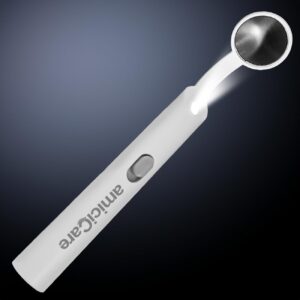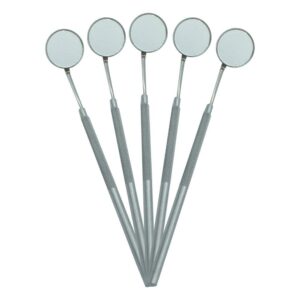Maintaining Patient Confidentiality in Dental Practice: A Guide for Dental Professionals
Maintaining Patient Confidentiality in Dental Practice: A Guide for Dental Professionals
As a dental professional, maintaining patient confidentiality is crucial to delivering quality care and building trust with your patients. Patient confidentiality involves protecting patients’ personal and medical information from unauthorized disclosure, which is not only a legal and ethical obligation but also essential for maintaining patients’ privacy and dignity.
In this blog, we’ll explore the importance of patient confidentiality in dental practice and provide practical tips for dental professionals to maintain confidentiality while delivering quality care.
- Understand HIPAA and Consent
The Health Insurance Portability and Accountability Act (HIPAA) sets national standards for protecting patients’ personal and medical information. As a dental professional, you must understand HIPAA regulations and ensure that your practice is compliant with them.
In addition to HIPAA regulations, obtaining patients’ informed consent is critical for maintaining patient confidentiality. Before providing treatment, inform your patients about the purpose of the treatment, potential risks, and benefits, and obtain their consent to proceed. Ensure that patients understand the details of the treatment and that they are aware of their rights to refuse or withdraw consent at any time.
- Secure Electronic Records
With the increasing use of electronic health records (EHRs), it’s crucial to protect patients’ information from unauthorized access or disclosure. Make sure that your EHR system is secure and that you have implemented strong passwords and user authentication protocols. Also, limit access to patient information only to authorized personnel and ensure that you log off from the system after use.
- Ensure Confidential Communication
Communicating with patients and other healthcare professionals is an essential aspect of dental practice. However, it’s critical to ensure that you communicate in a way that maintains patient confidentiality. Avoid discussing patient information in public areas, such as elevators or waiting rooms, and use secure communication channels, such as encrypted email, when sharing sensitive information.
- Provide Training for Staff
Dental professionals must ensure that their staff members are aware of patient confidentiality regulations and the importance of maintaining confidentiality. Provide regular training for your staff members on HIPAA regulations, patient consent, secure communication, and the handling of patient information. Ensure that staff members understand their role in maintaining patient confidentiality and the consequences of unauthorized disclosure.
In conclusion, maintaining patient confidentiality is crucial for dental professionals to deliver quality care and build trust with their patients. By understanding HIPAA regulations, obtaining patients’ informed consent, securing electronic records, ensuring confidential communication, and providing training for staff members, dental professionals can maintain patient confidentiality while delivering quality care.
- Properly Dispose of Patient Information
Dental professionals must ensure that they dispose of patient information correctly to maintain confidentiality. Ensure that you shred or otherwise destroy any paper documents containing sensitive patient information before discarding them. Also, ensure that you delete or otherwise securely dispose of electronic records that are no longer needed.
- Use a Privacy Screen
When using electronic records or discussing patient information with other healthcare professionals, ensure that you use a privacy screen to prevent unauthorized access to patient information. Privacy screens prevent others from viewing sensitive patient information on your computer or mobile device and are an important tool for maintaining confidentiality.
- Implement Access Controls
Implementing access controls for patient information is crucial for maintaining confidentiality. Ensure that you limit access to patient information only to authorized personnel and that you have implemented user authentication protocols, such as passwords or biometric identification. Additionally, ensure that you log and monitor all access to patient information to detect any unauthorized access or breaches.
- Follow Best Practices for Confidentiality in Research
Dental professionals involved in research must follow best practices for confidentiality to protect patient information. Ensure that you obtain patients’ informed consent before using their information for research purposes and that you anonymize any data used in research to prevent the identification of patients. Additionally, ensure that you follow all applicable regulations and guidelines for the handling and use of patient information in research.
In conclusion, maintaining patient confidentiality is critical for dental professionals to deliver quality care and build trust with their patients. By following best practices for confidentiality, including properly disposing of patient information, using a privacy screen, implementing access controls, and following best practices for confidentiality in research, dental professionals can protect patient information and maintain confidentiality while providing quality care.
- Use Encrypted Technology
Using encrypted technology, such as encrypted email or messaging apps, is an effective way to protect patient information from unauthorized access or disclosure. Ensure that you use secure communication channels when sharing sensitive patient information with other healthcare professionals, and that you provide instructions to patients on how to securely communicate with your practice.
- Be Mindful of Social Media Use
Dental professionals must be mindful of their social media use to avoid unintentional breaches of patient confidentiality. Ensure that you do not share any patient information on social media, including photos or stories, even if you do not identify the patient by name. Additionally, ensure that you have a policy in place for staff members’ social media use and provide regular training to staff members on best practices for confidentiality in social media use.
- Monitor Your Physical Environment
Maintaining confidentiality also includes ensuring that patients’ information is not visible to others in your physical environment. Ensure that you maintain a clean and organized workspace, with patient files stored securely and out of sight. Additionally, ensure that you limit the number of people who have access to your workspace to reduce the risk of unauthorized access.
- Respond Promptly to Breaches
Even with the best intentions and practices in place, breaches of patient confidentiality can still occur. Dental professionals must have a plan in place for responding to breaches of confidentiality promptly. Ensure that you have a plan in place for notifying patients of any breaches and for taking corrective action to prevent future breaches.
In conclusion, maintaining patient confidentiality is a critical responsibility for dental professionals. By following best practices for confidentiality, including using encrypted technology, being mindful of social media use, monitoring your physical environment, and responding promptly to breaches, dental professionals can protect patient information and maintain confidentiality while providing quality care.
- Regularly Review and Update Privacy Policies
Dental practices must have clear and comprehensive privacy policies in place that outline how patient information is collected, used, and protected. Ensure that you regularly review and update your privacy policies to reflect any changes in laws or regulations and any changes in your practice’s procedures.
- Conduct Regular Training on Confidentiality
Regularly conducting training on confidentiality for staff members is essential for maintaining confidentiality. Ensure that all staff members receive training on confidentiality best practices and that they understand their responsibilities for protecting patient information. Additionally, ensure that staff members understand the consequences of breaches of confidentiality.
- Establish a Culture of Confidentiality
Establishing a culture of confidentiality is critical for maintaining patient confidentiality. Ensure that you set an example for staff members by prioritizing patient confidentiality and that you create a culture that values confidentiality. Additionally, ensure that you celebrate and recognize staff members who demonstrate exceptional commitment to maintaining patient confidentiality.
- Seek Professional Help if Needed
In some cases, dental practices may need to seek professional help to maintain patient confidentiality. If you are unsure about how to handle a particular situation or if you suspect a breach of confidentiality, seek guidance from a legal or ethical expert. Additionally, consider consulting with a security expert to ensure that your practice’s technology and physical environment are secure.
In conclusion, maintaining patient confidentiality is a complex and ongoing responsibility for dental professionals. By following best practices for confidentiality, including regularly reviewing and updating privacy policies, conducting regular training, establishing a culture of confidentiality, and seeking professional help if needed, dental professionals can protect patient information and maintain confidentiality while providing quality care.
FAQ
- What is patient confidentiality in dental practice?
Patient confidentiality refers to the ethical and legal obligation of dental professionals to protect the privacy and personal information of their patients.
- What information is considered confidential in dental practice?
Confidential information in dental practice includes a patient’s name, address, date of birth, medical history, dental history, treatment plan, and any other information related to their oral health and treatment.
- How do dental professionals maintain patient confidentiality?
Dental professionals maintain patient confidentiality by implementing best practices for confidentiality, such as properly disposing of patient information, using encrypted technology, establishing access controls, and monitoring their physical environment.
- What are the consequences of breaching patient confidentiality in dental practice?
Breaching patient confidentiality can lead to legal and ethical consequences for dental professionals, including disciplinary action, loss of licensure, and lawsuits.
- Can patients access their dental records?
Yes, patients have the right to access their dental records. Dental professionals must provide patients with access to their records upon request, and patients have the right to request that their records be updated or corrected.
- How do dental professionals respond to breaches of patient confidentiality?
Dental professionals must have a plan in place for responding to breaches of patient confidentiality, including notifying patients of the breach, taking corrective action to prevent future breaches, and reporting the breach to the appropriate authorities if necessary.
- How often should dental professionals review and update their privacy policies?
Dental professionals should regularly review and update their privacy policies to reflect any changes in laws or regulations and any changes in their practice’s procedures. Experts recommend reviewing and updating privacy policies at least once a year.
- What should dental professionals do if they suspect a breach of confidentiality?
If dental professionals suspect a breach of confidentiality, they should investigate the situation promptly, document their findings, and take corrective action to prevent further breaches. Additionally, they may need to report the breach to the appropriate authorities, such as state dental boards or law enforcement agencies.





